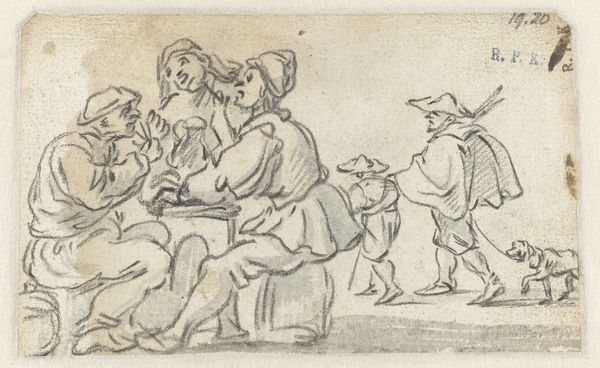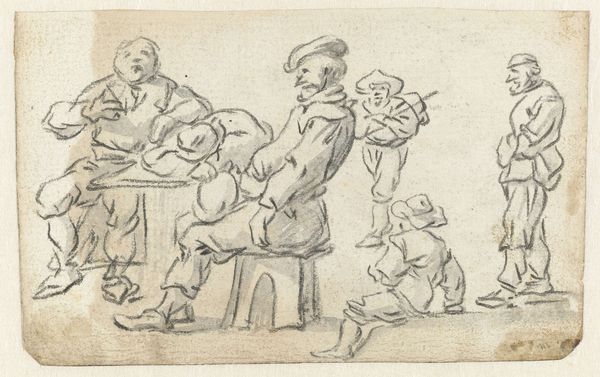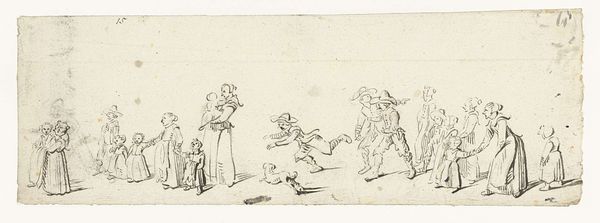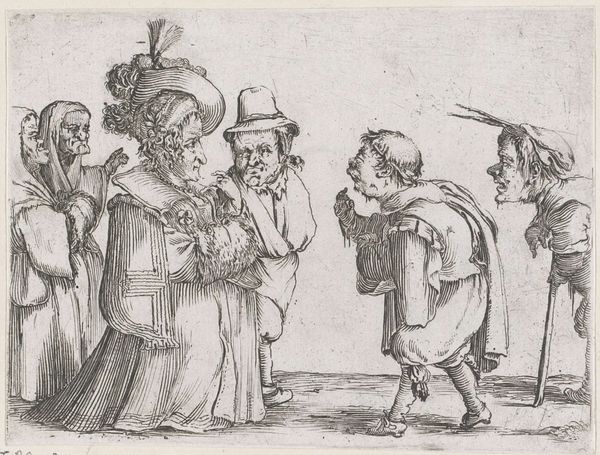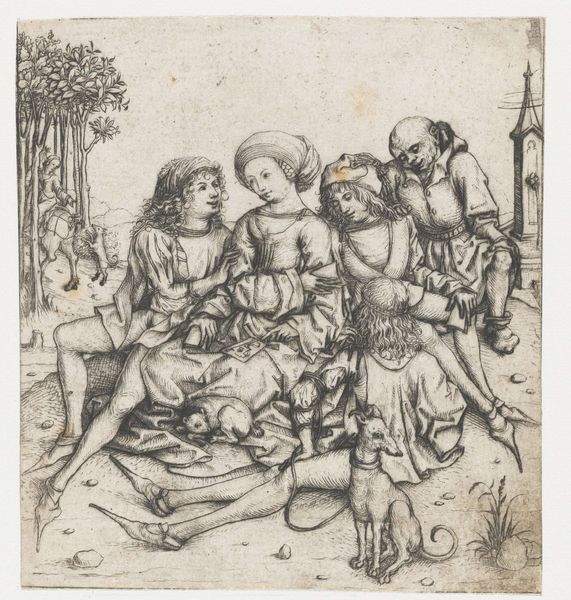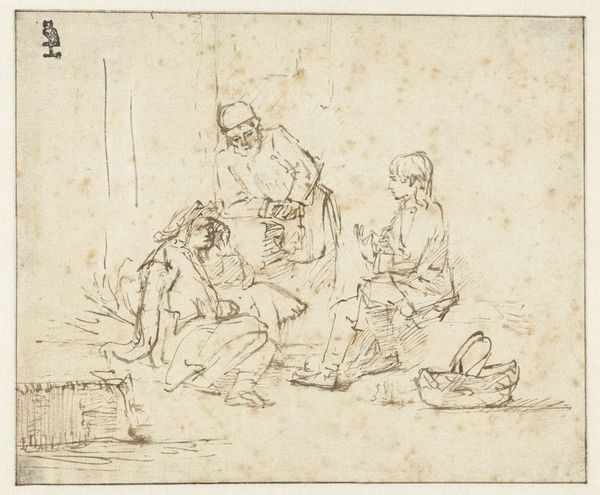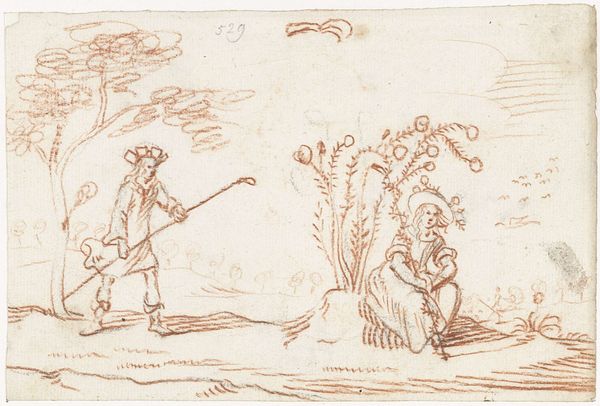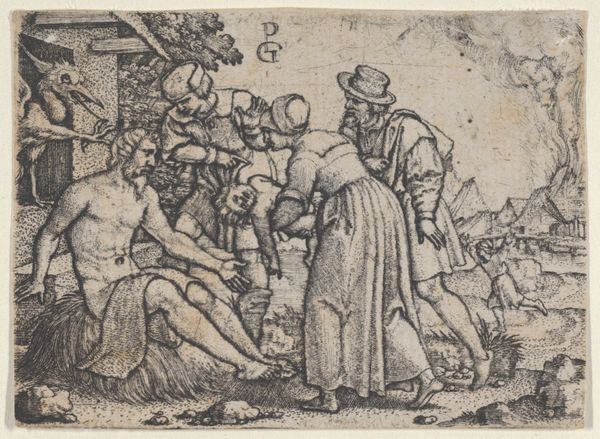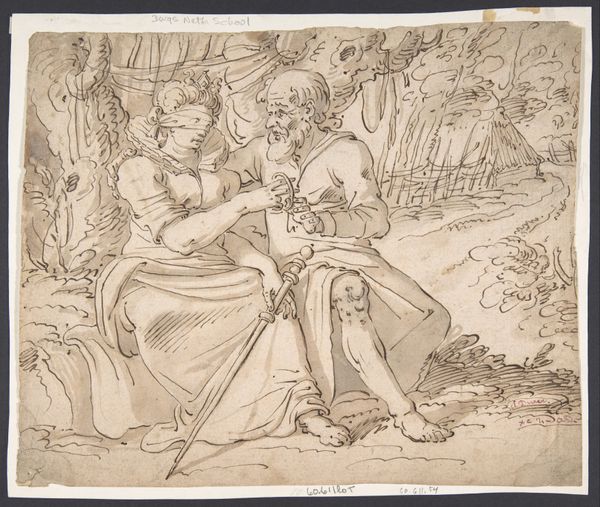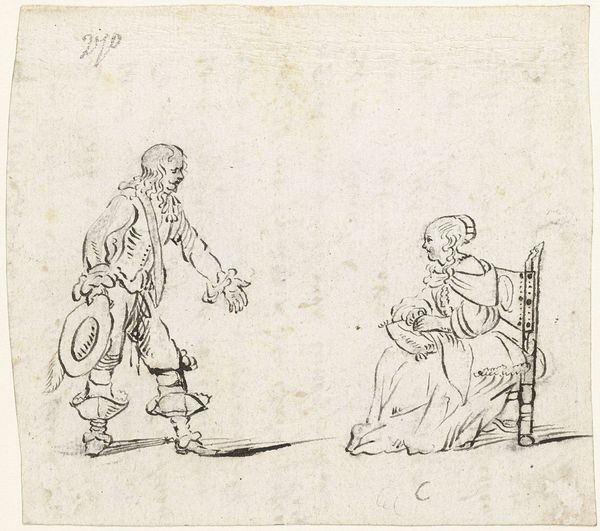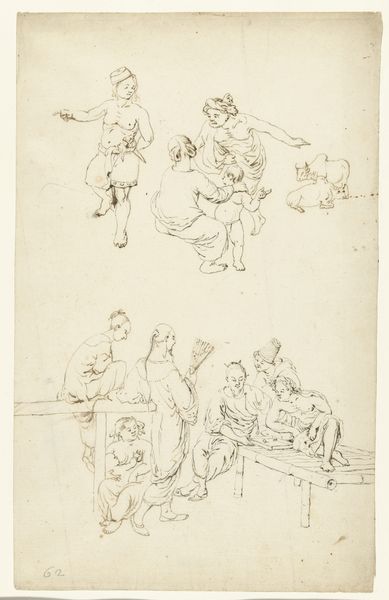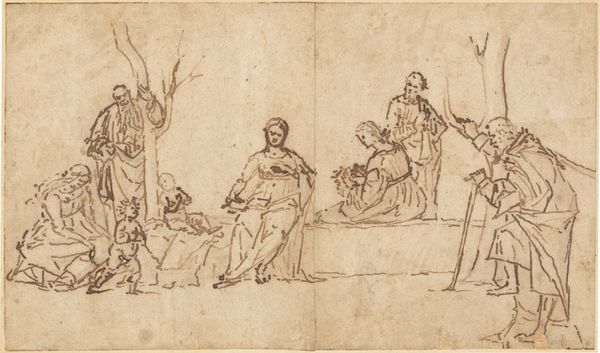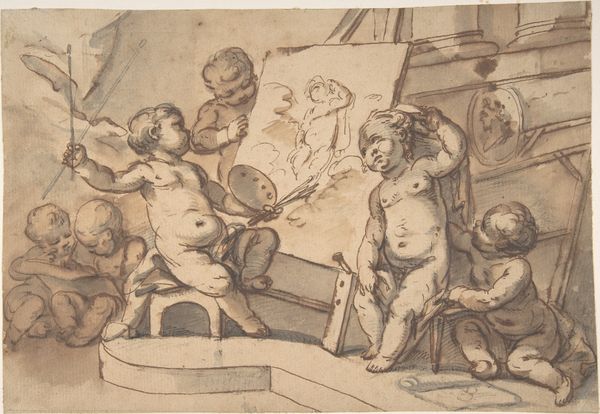
drawing, ink, pen
#
drawing
#
dutch-golden-age
#
pen sketch
#
figuration
#
ink
#
pen
#
genre-painting
Dimensions: height 108 mm, width 195 mm
Copyright: Rijks Museum: Open Domain
Curator: Welcome. Here we have "Gezelschap van zes personen," or "Company of Six," a pen and ink drawing attributed to Gesina ter Borch, dating from around 1654. It’s currently housed here at the Rijksmuseum. Editor: My first thought is: relaxed, and smoky. You’ve got this scene of people gathered, all lounging, some embracing, some smoking pipes. It’s like a snapshot of everyday leisure, but in such spare lines. You can almost smell the tobacco, can’t you? Curator: Ter Borch came from a family steeped in artistic practice, giving her access to materials and training typically unavailable to women at that time. What I find so interesting is how she used this intimate portrayal of social life as a form of quiet social commentary. Note the varying levels of engagement. Editor: Absolutely. And it is literally, materially, pen on paper, right? But that deceptively simple choice allows for such immediacy. No fuss, just capturing a moment, maybe a quickly sketched observation from her life. The economic availability of paper surely shaped that. Curator: It also speaks to the developing social structures in the Dutch Republic at that time, showing growing consumer culture reflected in leisure. Consider, how is this different than portrayals of laborers from this era, reflecting the value society placed on individuals. Editor: Yes, think about how tobacco itself transformed from a luxury commodity to something consumed more widely during this time. What's also remarkable is how the ink defines form with these sparse, deliberate marks— almost sculptural in their suggestion of volume. What kind of inks might have been used then and their trade routes I find fascinating. Curator: Indeed, and Gesina was doing more than just documenting her time. In this scene, she negotiates the complexities of familial and social life, providing both intimacy and critique. This is what makes her pieces such a valued historical perspective on the culture of the Dutch Golden Age. Editor: It’s a look behind the scenes that reminds us that artistic intention cannot be divorced from an artist's immediate surroundings. Thank you for showing us that an accessible drawing has such complexity to offer. Curator: And to remember that art is created and seen within a social, political context—and understanding that is crucial to true appreciation.
Comments
No comments
Be the first to comment and join the conversation on the ultimate creative platform.
